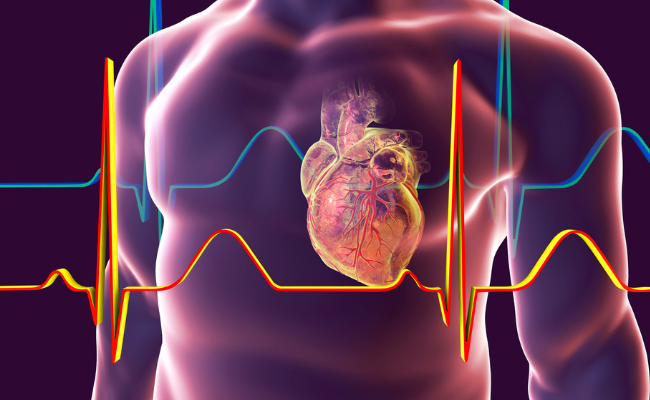How to Treat Brugada Syndrome?
- February 14, 2024
- No Comments

What is Brugada Syndrome?
Brugada syndrome, causes abnormal heart rhythms in the ventricles, the heart's lower chambers, which can lead to fainting and, in worst cases, sudden cardiac death. This irregular heartbeat often strikes during rest or sleep. The condition is characterized by erratic electrical activity in the heart, particularly ventricular fibrillation, which can cause the heart to stop beating altogether.
Why is Brugada Syndrome Concerning?
Brugada Syndrome poses a significant concern due to its potential to cause sudden cardiac death, often in seemingly healthy individuals, including young adults. The condition is notorious for its unpredictability, as symptoms may not manifest until a cardiac event occurs. Furthermore, Brugada Syndrome can be challenging to diagnose since some individuals may not display any noticeable symptoms, making it crucial to raise awareness about the condition and its management.
How is Brugada Syndrome Diagnosed?
Diagnosing Brugada Syndrome involves a combination of clinical evaluation, medical history assessment, and various diagnostic tests. Physicians may perform an electrocardiogram (ECG or EKG), which can detect abnormalities in the heart's electrical activity characteristic of Brugada Syndrome. However, since these abnormalities may not always be present, additional tests such as genetic testing or provocative drug testing may be necessary for an accurate diagnosis.
Treatment Solutions for Brugada Syndrome
Managing Brugada Syndrome involves a multifaceted approach aimed at reducing the risk of life-threatening arrhythmias and preventing sudden cardiac arrest. Here are some key treatment solutions:
- Medications: Antiarrhythmic medications such as quinidine or flecainide may be prescribed to stabilize the heart's electrical activity and reduce the likelihood of arrhythmias. These medications help regulate the heart's rhythm and can be effective in managing Brugada Syndrome symptoms.
- Implantable Cardioverter-Defibrillator (ICD): For individuals at high risk of sudden cardiac arrest due to Brugada Syndrome, implanting an ICD may be recommended. An ICD is a small device implanted under the skin that continuously monitors the heart's rhythm and delivers an electric shock to restore normal heart rhythm if a dangerous arrhythmia occurs.
- Avoiding Triggers: Certain factors such as fever, certain medications, alcohol consumption, and electrolyte imbalances can trigger arrhythmias in individuals with Brugada Syndrome. Avoiding these triggers or managing underlying conditions can help reduce the risk of cardiac events.
- Lifestyle Modifications: Adopting a heart-healthy lifestyle, including regular exercise, maintaining a balanced diet, avoiding smoking, and managing stress, can contribute to overall heart health and reduce the risk of complications associated with Brugada Syndrome.
- Genetic Counseling: Since Brugada Syndrome often has a genetic component, genetic counseling may be beneficial for individuals with a family history of the condition. Genetic counseling can provide information about the inheritance pattern of the condition and help individuals make informed decisions about family planning and screening for at-risk relatives.
Benefits of Treating Brugada Syndrome
- Reduced Risk of Sudden Cardiac Death: Effective treatment of Brugada Syndrome aims to stabilize the heart's electrical activity and prevent dangerous arrhythmias such as ventricular fibrillation. By doing so, treatment significantly reduces the risk of sudden cardiac death, which is one of the most serious and feared complications of the condition. This benefit alone underscores the importance of timely intervention and ongoing management.
- Improved Quality of Life: Brugada Syndrome can greatly impact an individual's quality of life due to the risk of fainting episodes, restrictions on physical activity, and the constant fear of sudden cardiac arrest. Through proper treatment and management, symptoms can be controlled, and the frequency of cardiac events can be reduced. This leads to an improved quality of life, allowing individuals to engage in daily activities, pursue hobbies, and enjoy time with family and friends without the constant worry of a life-threatening event.
- Enhanced Long-Term Outcomes: With appropriate treatment and ongoing monitoring, individuals with Brugada Syndrome can experience improved long-term outcomes. By effectively managing the condition and reducing the incidence of cardiac events, treatment helps prevent complications and prolongs life expectancy. Regular follow-up visits with healthcare providers ensure that treatment plans are optimized and adjusted as needed to maintain optimal heart health.
- Peace of Mind: For individuals living with Brugada Syndrome and their families, the peace of mind that comes from knowing the condition is being actively managed and treated cannot be overstated. Treatment provides reassurance that steps are being taken to reduce the risk of sudden cardiac death and improve overall outcomes. This peace of mind allows individuals to focus on living their lives to the fullest, rather than constantly worrying about their heart health.
- Empowerment Through Education: Educating individuals with Brugada Syndrome and their families about the condition, treatment options, and lifestyle modifications empowers them to take an active role in managing their health. By understanding the importance of medication adherence, lifestyle changes, and regular follow-up care, individuals can actively participate in their treatment plan, leading to better outcomes and improved overall well-being.
Comments (0)